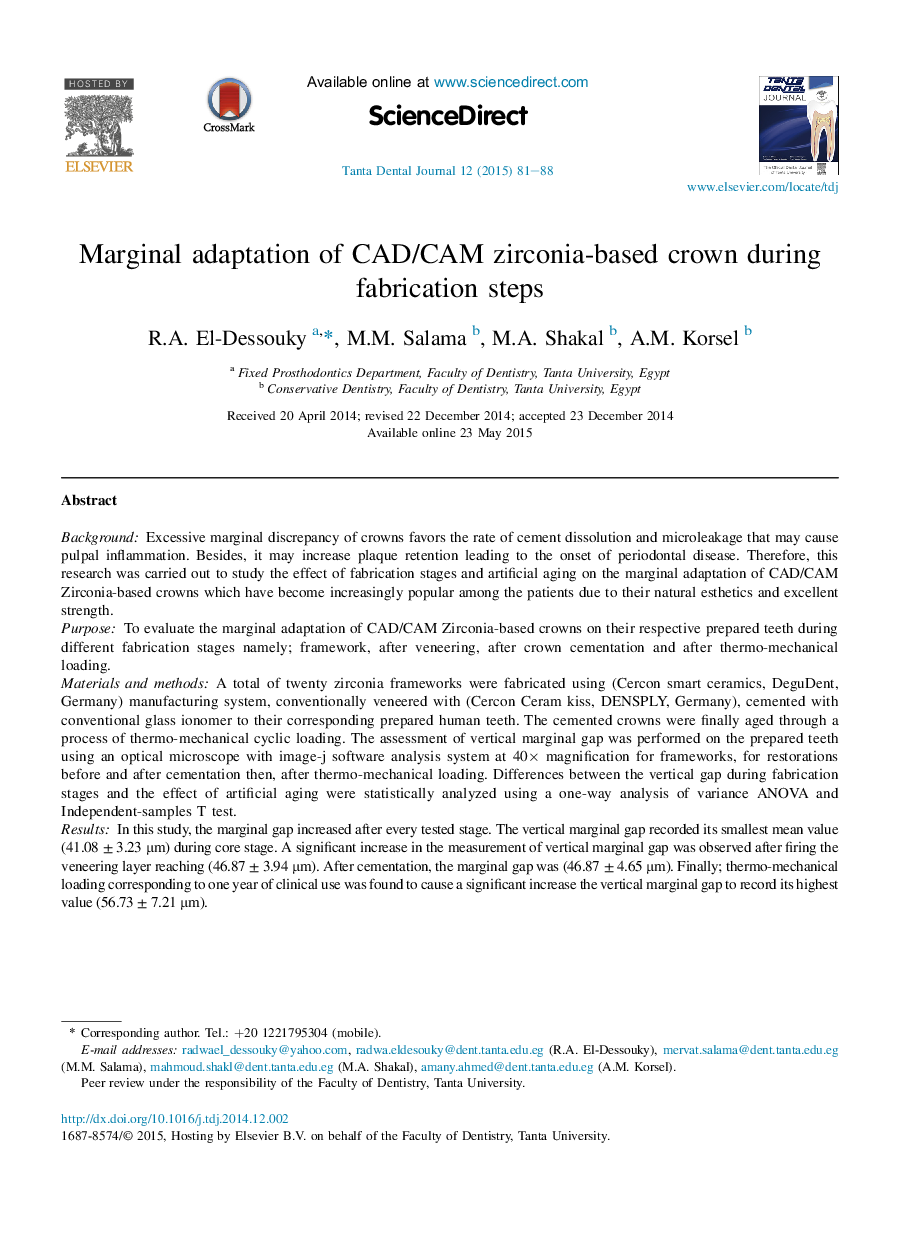| Article ID | Journal | Published Year | Pages | File Type |
|---|---|---|---|---|
| 3179680 | Tanta Dental Journal | 2015 | 8 Pages |
BackgroundExcessive marginal discrepancy of crowns favors the rate of cement dissolution and microleakage that may cause pulpal inflammation. Besides, it may increase plaque retention leading to the onset of periodontal disease. Therefore, this research was carried out to study the effect of fabrication stages and artificial aging on the marginal adaptation of CAD/CAM Zirconia-based crowns which have become increasingly popular among the patients due to their natural esthetics and excellent strength.PurposeTo evaluate the marginal adaptation of CAD/CAM Zirconia-based crowns on their respective prepared teeth during different fabrication stages namely; framework, after veneering, after crown cementation and after thermo-mechanical loading.Materials and methodsA total of twenty zirconia frameworks were fabricated using (Cercon smart ceramics, DeguDent, Germany) manufacturing system, conventionally veneered with (Cercon Ceram kiss, DENSPLY, Germany), cemented with conventional glass ionomer to their corresponding prepared human teeth. The cemented crowns were finally aged through a process of thermo-mechanical cyclic loading. The assessment of vertical marginal gap was performed on the prepared teeth using an optical microscope with image-j software analysis system at 40× magnification for frameworks, for restorations before and after cementation then, after thermo-mechanical loading. Differences between the vertical gap during fabrication stages and the effect of artificial aging were statistically analyzed using a one-way analysis of variance ANOVA and Independent-samples T test.ResultsIn this study, the marginal gap increased after every tested stage. The vertical marginal gap recorded its smallest mean value (41.08 ± 3.23 μm) during core stage. A significant increase in the measurement of vertical marginal gap was observed after firing the veneering layer reaching (46.87 ± 3.94 μm). After cementation, the marginal gap was (46.87 ± 4.65 μm). Finally; thermo-mechanical loading corresponding to one year of clinical use was found to cause a significant increase the vertical marginal gap to record its highest value (56.73 ± 7.21 μm).ConclusionWithin the limitations of this study, it was found that every examined stage had a negative effect on the vertical marginal adaptation of zirconia crowns.
